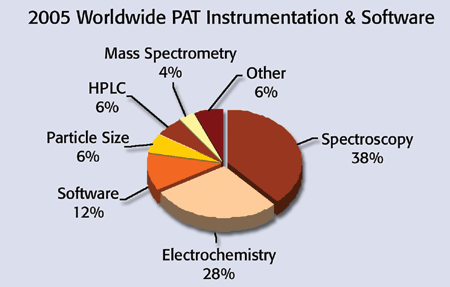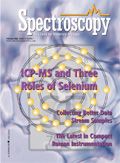Market Profile: Process Analytical Technology Instrumentation
With the unprecendented attention paid to the subject of process analytical technoloy

With the unprecedented attention paid to the subject of process analytical technology (PAT) in the pharmaceutical and biotechnology industries over the last year or two, many scientists and engineers now find themselves asking whether it is more hype or a tangible development. While PAT has received significant attention of late, its application is nothing new. Although spectroscopy is the most common analytical tool utilized in the application of PAT, other techniques hold strong potential as well.
While the term PAT has been hammered into the vernacular of those in pharmaceutical manufacturing of late, it is already a well known concept. The premise behind PAT is to be able to understand the critical parameters of a manufacturing process, monitor them, and control the process, as opposed to 100% inspection of the final product in order to "test quality in." Process monitoring and control has long been common in most manufacturing industries outside of pharmaceuticals and biotechnology. Only recently has the FDA, along with other organizations, begun to push to create a paradigm shift in the ideology of pharmaceutical manufacturing from testing in quality to the PAT model.

2005 Worldwide PAT Instrumentation & Software
Of all the analytical technologies utilized in PAT applications, spectroscopy is the largest in terms of dollars, with near infrared (NIR) by far the most common technique. Electrochemistry, while smaller in dollar terms, is more commonly applied due to the lower cost and relative simplicity of this technique. Other analytical techniques that are now seeing significant application include particle size analysis, HPLC, mass spectrometry, and the small but fast growing technique of thermal effusivity. The market for software for instrument control, process modeling, and data collection and analysis lags significantly behind the instrument technologies in terms of development, and is primarily the realm of software consultants who develop highly customized solutions for individual manufacturers. The combined worldwide PAT instrument and software market was worth nearly $150 million in 2005, but should see annual growth in the mid-teens through 2010.
The foregoing data was extracted from SDi's market analysis and perspectives report titled PAT Instrumentation: The Pharmaceutical and Biotechnology Market for Process Analytical Technology, January 2006. For more information, contact Stuart Press, Senior Consultant, Strategic Directions International, Inc., 6242 Westchester Parkway, Suite 100, Los Angeles, CA 90045, (310) 641-4982, fax: (310) 641-8851, www.strategic-directions.com.

New Raman Spectroscopy Method Enhances Real-Time Monitoring Across Fermentation Processes
April 15th 2025Researchers at Delft University of Technology have developed a novel method using single compound spectra to enhance the transferability and accuracy of Raman spectroscopy models for real-time fermentation monitoring.
New Multi-Spectroscopic System Enhances Cultural Heritage Analysis
April 2nd 2025A new study published in Talanta introduces SYSPECTRAL, a portable multi-spectroscopic system that can conduct non-invasive, in situ chemical analysis of cultural heritage materials by integrating LIBS, LIF, Raman, and reflectance spectroscopy into a single compact device.